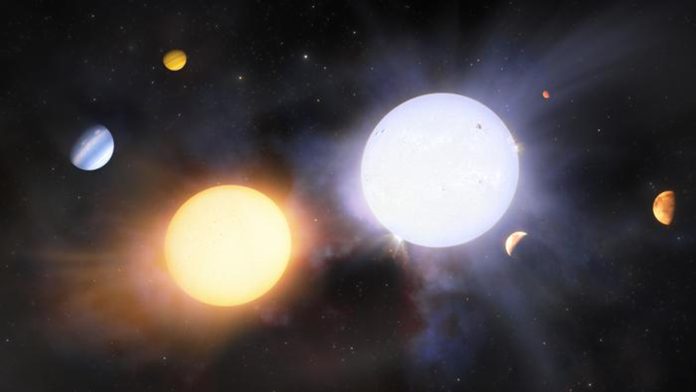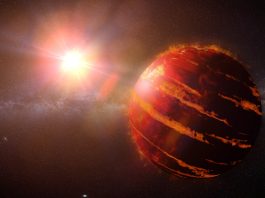With the new, precise Gemini High Resolution Optical SpecTrograph (GHOST), researchers studied different wavelengths of light given off by a pair of giant binary stars, revealing significant differences in their chemical make-up.
It is estimated that up to 85% of stars exist in giant binary star systems, some even in systems with three or more stars.
These stellar pairs are born together out of the same molecular cloud from a shared abundance of chemical building blocks, so astronomers would expect to find that they have nearly identical compositions and planetary systems.
While some proposed explanations attribute these dissimilarities to events occurring after the stars evolved, the researchers confirmed that differences in the chemical composition of giant stars can be traced back to the earliest stages of their formation.
“GHOST’s extremely high-quality spectra allowed us to measure the stars’ stellar parameters and chemical abundances with the highest possible precision,” said Carlos Saffe of the Institute of Astronomical, Earth and Space Sciences in Argentina.
Explanations for differences in binary stars
Previous studies have proposed three possible explanations for observed chemical differences between giant binary stars.
Two of them involve processes that would occur well into the stars’ evolution: atomic diffusion and the settling of chemical elements into gradient layers depending on each star’s temperature and surface gravity.
The engulfment of a small, rocky planet would introduce chemical variations in a star’s composition.
The third possible explanation looks back at the beginning of the stars’ formation, suggesting that the differences originate from primordial or pre-existing areas of nonuniformity within the molecular cloud.
Instead, Saffe and his team observed a binary consisting of two giant stars. These stars possess extremely deep and strongly turbulent external layers or convective zones.
Owing to the properties of these thick convective zones, the team was able to rule out two of the three possible explanations.
Researchers ruled out previous explanations
The continuous swirling of fluid within the convective zone would make it difficult for the material to settle into layers, meaning giant stars are less sensitive to the effects of atomic diffusion — ruling out the first explanation.
The thick external layer also means that a planetary engulfment would not change a star’s composition much since the ingested material would rapidly be diluted — ruling out the second explanation.
This leaves primordial inhomogeneities within the molecular cloud as the confirmed explanation.
Saffe commented: “This is the first time astronomers have been able to confirm that differences between binary stars begin at the earliest stages of their formation.”
These results offer an explanation for why astronomers see binary stars with such different planetary systems.
They also pose a crucial challenge to the concept of chemical tagging by showing that stars with different chemical compositions can still have the same origin.









